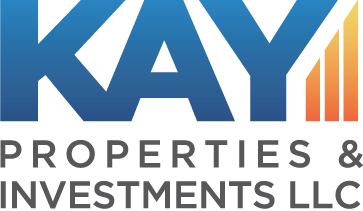Fractional Ownership of DSTs Creates more Options
What happens if I don’t replace the full sale price?
By: Dwight Kay, CEO and Founder of Kay Properties and Investments and the Kay Properties team
When doing your calculation on replacement value for a 1031 Exchange, don’t leave out an important part of the equation – replacement debt. One of the basic 1031 Exchange requirements necessary to qualify for a full tax deferral on capital gains taxes from the sale of a property is to a) purchase equal or greater value in replacement properties as you had in relinquished property and b) reinvest 100% of the net sales proceeds into a replacement property or properties. A common mistake people make is interpreting the 100% to mean only the equity portion from a sale. However, for full tax deferral you need to reinvest 100% of net sales proceeds as well as purchase equal or greater value of replacement properties which for investors that paid off a mortgage (debt) when selling a property means that they also need to replace that debt with their replacement property.
Say you sold a property for $300,000, but you had a $100,000 loan on the property. Once you paid off that loan you received $200,000 in equity that, per the rules of a 1031 Exchange, is being held by a Qualified Intermediary. In order to complete the full exchange, you have to replace that $300,000. So, what are your options? You could:
1) Put in an extra $100,000 out of your own pocket.
2) Borrow that $100,000 from a bank or other lender; or
3) Invest in a DST that already has the debt “built in” so to speak.
Fractional ownership of DSTs creates more options
One of the potential advantages of a DST is that it is fractional ownership with debt that is already prepackaged into the investment. Effectively, what that means is that it is relatively simple to make the math work – almost down to the penny. Investors also have greater flexibility in putting their investment dollars into multiple DSTs in a variety of combinations and still achieving their desired equity and debt targets. Additionally, Kay Properties’ DST marketplace features investment opportunities that span a wide range of debt levels, from as low as 25% upwards of 70%. Also, for investors that don’t have any debt to replace since they owned their previous property free and clear with no loans, Kay Properties DST marketplace also has debt free DST properties which have no mortgages. So, it is easy for investors to find options that fit their investment objectives and that can match their equity and debt targets.
For example, an investor who needs to replace $200,000 in equity and $100,000 in debt could put $100,000 into one DST with no debt (an all cash debt free DST) and the remaining $100,000 into a DST that has a loan on the property at 50% Offering Loan to Value (LTV). Another option would be to put $50,000 into a DST with no debt and $75,000 each into two additional DSTs that both have 40% LTV.
In comparison, an investor conducting an exchange with a single property, such as a rental home, would have to find a property they want to buy at the desired $300,000 price. They would then have to bring their own money to the table for an all cash purchase or secure a $100,000 mortgage. Effectively, investors are working in a much narrower box with fewer alternatives – all while the clock is winding down on the 180-day timeframe allowed to complete an exchange.
What happens if I don’t replace the full sale price?
If you don’t replace the debt portion from a sale, it is referred to as the “mortgage boot”, and you would have to pay taxes on that amount. A variety of factors can influence the rate at which that boot is taxed. So, it is important to check with your tax advisor and/or attorney to know what your tax liability would be if you choose not to replace the sale price.
Another important caveat to note is that the tax code allows for the replacement sale price to be calculated less allowable expenses, such as a real estate broker’s fee or closing costs from a sale. So, it is important to work with your CPA and/or attorney to recognize any qualifying deductions and pinpoint the precise net sale proceeds that need to be replaced, including specific target amounts for both debt and equity.
For more information on how 1031 exchanges work and what your options when replacing debt with a DST offering please visit www.kpi1031.com When you register you will receive a free book on 1031 exchanges and DST properties full of valuable information as you decide what the right strategy is for your specific 1031 exchange.

